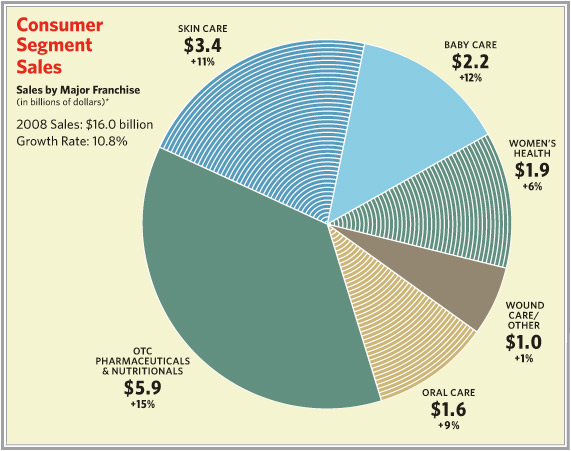Enlightening Our Customers
Introducing science to the art of beauty helps inform product selection.
A first-of-its kind flagship NEUTROGENA® store opened in Mumbai, India, in 2009, creating a new opportunity for consumers. “Walking into the store, they see a dermatologist and have more confidence about the products available to meet their skin care needs,” says Geetanjali Shetty, M.D., F.C.P.S., D.D.V., a dermatologist who works in the unique setting.
“Today the role of dermatologists extends beyond just treating problematic areas to educating consumers about things like sun damage, the importance
of using sunscreen and use of skin care regimens.”
With dermatologists in markets around the world recommending NEUTROGENA®, Dr. Shetty says, “The store itself is a good platform for educating people about science-based skin care.”
Innovative Skin Care
NEUTROGENA®, along with AVEENO®, RoC® and CLEAN & CLEAR®, is among the well-known skin care franchise brands that bring science to the art of beauty. “Beauty is about more than science,” says May Shana’a, Vice President, Skin Care R&D, Johnson & Johnson Group of Consumer Companies. “What we’ve been able to do is really bring science and art together to produce innovative products with great clinical performance, as well as a look, smell and feel that’s right.”
May explains teams with both R&D and marketing expertise are assembled to come up with innovative skin care solutions that can be leveraged across brands. Such teams were the first to stabilize retinol, a significant anti-aging advance for skin care, and to develop other best-in-class skin care solutions like breakthrough sun protection technologies HELIOPLEX® and ACTIVE PHOTOBARRIER COMPLEX™.
Another example is Feverfew PFE™, a proprietary botanical extract with anti-inflammatory and calming properties. Three scientists who developed Feverfew PFE™ were recognized in 2009 with the prestigious Johnson Medal, given annually by Johnson & Johnson since 1960 to accomplished researchers for extraordinary creativity and scientific achievement. Their work provided new scientific information in the area of inflammation and skin aging, and brought together science and natural health supplements.
Other skin care researchers have developed a new anti-aging alternative, leveraged across brands and launched in early 2010.
“Best-in-class is not just a slogan,” says May. “Every claim we make is substantiated by testing, from preclinical testing to skin cultures and in-vitro work to studies on consumers. Our commitment to delivering innovative skin care is very strong.”
Professional Relationships
Clinical studies that are shared with professionals at medical meetings, such as the American Academy of Dermatology Meeting held each March, play a role in forming important relationships. Products that use technologies developed by skin care R&D researchers from Johnson & Johnson companies are recommended to consumers by dermatologists and other health care professionals.
A heritage of professional endorsement is part of product messaging and is a key to success in many sales channels, ranging from traditional retail settings to more innovative new channels such as home shopping networks, online sales and even door-to-door sales.
As with the dermatologists on site in India, well-developed professional relationships play an important role in connecting with consumers. Such relationships have been integral from the start for some of the most successful products from the skin care franchise.
AVEENO® was founded in 1945 at the Mayo Clinic with a colloidal oatmeal bath that provided the naturally active benefits of oats. NEUTROGENA® soap, the product for which the company was named, was marketed directly to dermatologists, a novel idea in the 1950s.
“Each of the brands in the skin care franchise has brought learnings about developing these relationships,” says May. “Today we work with dermatologists at many different levels, from product development to consumer education, driving innovation to meet consumer needs.”


